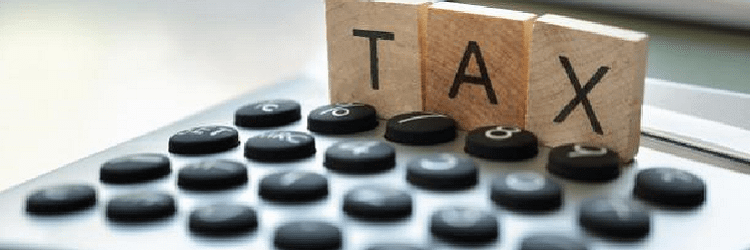
Tax Basics for startups
Startups often find tax rules confusing and difficult to remember. From filing dates to rates and chargeability, rules are different from state to state and depending on which type of tax must be paid.
If you’re part of a new startup looking for information about when to charge Service Tax, Value Added Tax(VAT) or Central Sales Tax (CST), this article is here to help. You’ll learn about the differences in chargeability, rates, and point of taxation for Service Tax, VAT, and CST.
Basic Differences
Service Tax: Service Tax is a form of indirect tax imposed on services provided. From the layman's point of view, providing services means assisting in any work, taking up of any work on behalf of others, performing any professional assignment or rendering intangible benefits to others.
VAT: VAT is a form of indirect tax imposed on goods sold within a particular state, which essentially means that the buyer and the seller need to be in the same state. Only when tangible goods and products are sold can VAT be imposed.
CST: CST is a form of indirect tax imposed on goods sold from one state to another state, which is only applicable to transactions in which the buyer and seller are in different states.
Governing Act
Service Tax: Service Tax is governed by the Finance Act of 1994. At that time, the finance minister implemented taxes on services rendered to reduce taxes on manufacturing and trade without forcing the government to compromise on its revenue needs. Service tax does not have any specific act to govern its stipulations.
VAT: VAT is governed by respective state acts. Every state has a separate and distinct VAT act reserved for their state.
CST: CST (Central Sales Tax) is governed by the Central Sales Tax Act of 1956. This tax is governed by a single central act, though the chargeability is state specific.
Registration under Act
Service Tax: Service Tax registration is a function of gross turnover. Once the turnover of the assessee crosses a threshold limit of Rs 9 lacs, the service provider is required to register under the law, and must charge service tax on services provided once the turnover crosses Rs 10 lacs.
VAT: VAT registration is compulsory for dealers having a turnover exceeding Rs 5 lacs (or increased limit of Rs 10 lacs in some states).On registration, such dealer is allotted a unique 11 digit TIN (Taxpayer Identification Number).
CST: CST registration is not dependent on the amount of turnover. Simply put, registration of dealer becomes compulsory once he engages in an interstate sale.
Due Dates of Returns
Service Tax: Service Tax returns are due half-yearly shown as under:
April – September: 25th October.
October – March: 25th April.
VAT: When VAT returns are due varies from state to state. In Maharashtra state, VAT returns are due on 21th of the succeeding month following the relevant month. For June 2016 returns, for example, the due date for VAT returns is July 21, 2016.
CST: Due dates for CST returns are similar to VAT return due dates.
Rate of Charge
Service Tax: The present rate is 15.00 % [Including- Basic Rate (14%), Swachh Bharat Cess(0.50 %) and Krishi Kalyan Cess (0.50%)], which is leviable on all services except those captured in the Negative List(a list comprising 17 specific service tax exempt services).
VAT: VAT (Value Added Tax) does not have any uniform rate. For example, here are Maharashtra’s tax rates as of June 2016:
- Schedule ‘A’ – Essential Commodities (Tax-free) – Nil
- Schedule ‘B’ – Gold, Silver, Precious Stones, Pearls etc. - 1%
- Schedule ‘C' – Declared Goods and other specified goods - 5% (Rates for items other than declared goods changed to 5.5%)
- Schedule ‘D’ – Foreign Liquor, Country Liquor, Motor Spirits, etc. - 20% and above.
- Schedule ‘E’ – All other goods (not covered by A to D) - 12.5% from 01.04.2016".
CST: The CST rate varies situationally. Unlike Service Tax and VAT, CST has neither a uniform rate nor a rate solely dependent upon the category of goods being sold.On both declared and other goods, when goods are sold to government with a‘D’ form, a 2% tax or state sales tax (or VAT), whichever is lower, is applicable.On both declared and other goods, when a sale is made to a registered dealer for resale/use in the manufacturing industry via submission of a ‘C’ form, a tax of 2% or state sales tax(or VAT), whichever is lower, is applied.
For sales in other cases, a double VAT rate is applicable for declared goods, and a 10%state sales tax (or VAT), whichever is lower, is applicable.
Point of Taxation
Service Tax: Service Tax is usually charged at the time of rendering services. However, there may be a situation in which service tax is charged even before rendering services or after completion of service. The important thing to note here is the timing of chargeability and the rate of chargeability.
Chargeability arises when services are rendered, while the rate is determined at the time of payment by service receiver. Suppose when services are rendered, the rate is 12.36% on such services. However, when the receiver makes payment, the rate is 15.00%. In this case, the applicable rate is 15.00%.
However, suppose when services are rendered, the service fell into an exempt category. By the time the receiver makes payment, though, the rate is 15.00%. In thiscase, the applicable rate is 0%, since chargeability did not arise at the time of rendering services, as they were considered exempt at that time.
VAT: VAT follows a different practice of chargeability, in which the fulfillment of the following conditions generates chargeability:
- Existence of ‘goods’
- Sale of ‘goods’
- Within the state i.e. both the buyer and seller should be situated in the same state.
CST: CST runs parallel with VAT conditions, when it comes to chargeability, except for the third condition. Here, the transaction must take place from one state to another.
Time of Payment/Deposit of Tax
Service Tax: For quarterly/monthly assessees, the due date is the 6th of the succeeding month for the current month’s sales. Service Tax for the quarter/month ending March 31 is payable by March 31.
VAT: In Maharashtra state, VAT is payable by 21st of the succeeding month following the relevant month i.e. For June 2015, the due date of VAT payment is July 21.
CST: CST is payable by 21st of the month following the relevant month i.e. For June 2015, the due date of VAT payment is July 21.
Valuation Method
Service Tax: Service Tax is leviable on the value of services rendered. Such value will be calculated in the following situations in the manner prescribed below:
- Case: Where a provision of service is for a consideration in money. Value: Gross amount charged by the service provider for such services.
- Case: Where a provision of service is for a consideration partly consisting of money.
Value: Estimated monetary value of services under prevalent market conditions. - Case: Where a provision of service is for a consideration which is unascertainable.
Value:Service Tax (Determination of Value) Rules, 2006.
VAT: VAT carries state-to-state varied valuation methods for computing sale price. However, the valuation method laid down for CST can be approximately applied for sale value determination on which VAT is chargeable.
CST: CST would be levied on the sale price which would include the following:
- CST (whether or not shown separately)
- Excise Duty (whether or not shown separately)
- Cost of Packing Material
- Packing Charges
- Bonus Discount or Incentive bonus for additional sales effected by the dealer
- Insurance Charges
It’s plain to see that sales taxes are not easy for beginners. Startups have enough to worry about without adding the burden of complying with varying tax deadlines and forms. In Maharashtra state, Avalara offers automated, fast compliance with TrustFile India. Visit TrustFile India to learn more and make your taxes easier today.




